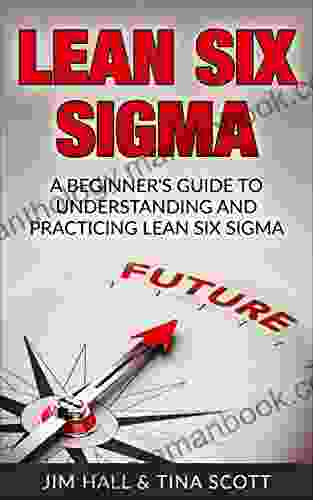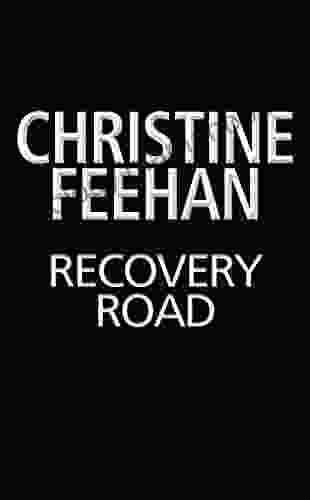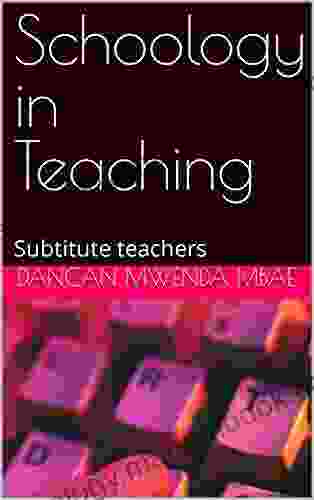Unveiling the Hidden Scars: A Comprehensive Exploration of Emotional Abuse in the Classroom

4 out of 5
| Language | : | English |
| File size | : | 8655 KB |
| Text-to-Speech | : | Enabled |
| Screen Reader | : | Supported |
| Enhanced typesetting | : | Enabled |
| Word Wise | : | Enabled |
| Print length | : | 166 pages |
| Lending | : | Enabled |
| Item Weight | : | 7.1 ounces |
The classroom should be a sanctuary for learning, growth, and intellectual exploration. However, for some students, it can become a breeding ground for an insidious form of abuse: emotional abuse in the classroom. Emotional abuse, though often overlooked, is a prevalent issue that can have devastating consequences on students' mental health, academic performance, and overall well-being.
This article delves into the complex world of emotional abuse in the classroom, examining its various forms, signs, and impact on students. We will explore the role of teachers, parents, and school administrators in identifying and addressing this issue, and provide concrete strategies for prevention and intervention.
Understanding Emotional Abuse in the Classroom
Emotional abuse in the classroom is a form of psychological abuse that involves the use of words and actions to undermine a student's self-esteem, self-worth, and emotional well-being. It can manifest in a variety of ways, including:
- Verbal abuse: Humiliation, insults, name-calling, threats, or mocking
- Nonverbal abuse: Intimidation, exclusion, isolation, or dismissive gestures
- Relational aggression: Spreading rumors, gossiping, or manipulating friendships to ostracize a student
- Cyberbullying: Using digital media to harass, humiliate, or threaten a student
While emotional abuse may not leave physical scars, its impact on students can be profound and long-lasting.
Impact of Emotional Abuse in the Classroom
Emotional abuse in the classroom can have a devastating impact on students' academic performance, mental health, and overall well-being. Research has shown that students who experience emotional abuse are more likely to:
- Have lower self-esteem and confidence
- Experience anxiety, depression, and other mental health issues
- Engage in risky behaviors, such as substance abuse or self-harm
- Have difficulty forming and maintaining healthy relationships
- Experience decreased academic motivation and performance
Identifying Emotional Abuse
Identifying emotional abuse in the classroom can be challenging, as it often occurs in subtle and covert ways. Some common signs to watch for include:
- Changes in a student's behavior or attitude: Withdrawal, isolation, or aggression
- Physical complaints: Headaches, stomachaches, or fatigue
- Difficulty concentrating or making decisions
- Negative self-talk or self-loathing
- Fear or avoidance of certain people or situations
Role of Teachers, Parents, and School Administrators
Teachers, parents, and school administrators all play a critical role in identifying and addressing emotional abuse in the classroom.
Teachers are in a unique position to observe and intervene in situations where emotional abuse may be occurring. They can:
- Create a positive and respectful classroom environment
- Establish clear expectations for behavior and consequences
- Monitor student interactions and address any signs of bullying or harassment
- Provide support and guidance to students who may be experiencing emotional abuse
- Talking to their children about their experiences in school
- Listening to their concerns and providing reassurance
- Encouraging them to report any instances of emotional abuse
- Working with the school to address any issues that may arise
- Establish clear policies and procedures for reporting and addressing emotional abuse
- Provide training for staff on how to identify and respond to emotional abuse
- Create a school climate that promotes respect and empathy among students
- Work with parents and community organizations to provide support to students who have experienced emotional abuse
- Creating a positive classroom climate: Teachers should foster an environment where students feel respected, valued, and supported.
- Establishing clear expectations: Expectations for behavior should be clear and consistently enforced. Consequences for inappropriate behavior should be fair and administered consistently.
- Encouraging communication: Open communication between students, teachers, and parents is essential for identifying and addressing issues of emotional abuse.
- Providing support: Students who have experienced emotional abuse need support and guidance. This can be provided by teachers, counselors, or other trusted adults.
- Reporting incidents: All incidents of emotional abuse should be reported to the appropriate school authorities. This will allow for appropriate intervention and support.
- Talking about your experiences: Talking about emotional abuse with a trusted friend, family member, or therapist can help you process your feelings and develop coping mechanisms.
- Seeking support: Connecting with support groups or online communities can provide you with a sense of belonging and support.
- Practicing self-care: Engage in activities that make you feel good, such as exercise, meditation, or spending time in nature.
- Focusing on your strengths: Remind yourself of your strengths and accomplishments. This can help you build self-confidence and resilience.
Parents can support their children by:
School administrators are responsible for creating a safe and supportive school environment that addresses emotional abuse. They can:
Prevention and Intervention
Preventing and intervening in emotional abuse in the classroom requires a multi-pronged approach that involves students, educators, parents, and school administrators. Some key strategies include:
Resilience and Coping
For students who have experienced emotional abuse, developing resilience is essential. Building resilience involves developing coping mechanisms, seeking support, and engaging in self-care activities. Some strategies include:
Emotional abuse in the classroom is a serious issue with far-reaching consequences. By understanding the different forms of emotional abuse, its impact on students, and the role of different stakeholders in identifying and addressing it, we can create a safer and more supportive learning environment for all.
Together, let's work towards creating a future where every classroom is free from the hidden scars of emotional abuse.
4 out of 5
| Language | : | English |
| File size | : | 8655 KB |
| Text-to-Speech | : | Enabled |
| Screen Reader | : | Supported |
| Enhanced typesetting | : | Enabled |
| Word Wise | : | Enabled |
| Print length | : | 166 pages |
| Lending | : | Enabled |
| Item Weight | : | 7.1 ounces |
Do you want to contribute by writing guest posts on this blog?
Please contact us and send us a resume of previous articles that you have written.
 Top Book
Top Book Novel
Novel Fiction
Fiction Nonfiction
Nonfiction Literature
Literature Paperback
Paperback Hardcover
Hardcover E-book
E-book Audiobook
Audiobook Bestseller
Bestseller Classic
Classic Mystery
Mystery Thriller
Thriller Romance
Romance Fantasy
Fantasy Science Fiction
Science Fiction Biography
Biography Memoir
Memoir Autobiography
Autobiography Poetry
Poetry Drama
Drama Historical Fiction
Historical Fiction Self-help
Self-help Young Adult
Young Adult Childrens Books
Childrens Books Graphic Novel
Graphic Novel Anthology
Anthology Series
Series Encyclopedia
Encyclopedia Reference
Reference Guidebook
Guidebook Textbook
Textbook Workbook
Workbook Journal
Journal Diary
Diary Manuscript
Manuscript Folio
Folio Pulp Fiction
Pulp Fiction Short Stories
Short Stories Fairy Tales
Fairy Tales Fables
Fables Mythology
Mythology Philosophy
Philosophy Religion
Religion Spirituality
Spirituality Essays
Essays Critique
Critique Commentary
Commentary Glossary
Glossary Bibliography
Bibliography Index
Index Table of Contents
Table of Contents Preface
Preface Introduction
Introduction Foreword
Foreword Afterword
Afterword Appendices
Appendices Annotations
Annotations Footnotes
Footnotes Epilogue
Epilogue Prologue
Prologue Tia Levings
Tia Levings Thomas Sowell
Thomas Sowell Len Unsworth
Len Unsworth Mary Lynn Stewart
Mary Lynn Stewart Gary A Baribeault
Gary A Baribeault Best Book Briefings
Best Book Briefings Eric Freeman
Eric Freeman Susan Lever
Susan Lever Danielle N Du Puis
Danielle N Du Puis Roger Hargreaves
Roger Hargreaves Daniele Mencarelli
Daniele Mencarelli Phil Cohen
Phil Cohen Alison Scott Wright
Alison Scott Wright Howard Brenton
Howard Brenton Trudi Canavan
Trudi Canavan Mary Patterson
Mary Patterson R M De Loera
R M De Loera Carol Ann Duffy
Carol Ann Duffy Pat Nicholson
Pat Nicholson J M Farkas
J M Farkas
Light bulbAdvertise smarter! Our strategic ad space ensures maximum exposure. Reserve your spot today!

 Chandler WardLean Six Sigma Beginner Guide to Understanding and Practicing Lean Six Sigma
Chandler WardLean Six Sigma Beginner Guide to Understanding and Practicing Lean Six Sigma
 Julio Ramón RibeyroMarguerite de Valois: Queen, Saint, and the Inspiration Behind the Cycle des...
Julio Ramón RibeyroMarguerite de Valois: Queen, Saint, and the Inspiration Behind the Cycle des...
 Dominic SimmonsThe Cambridge Companion to Goethe: Unveiling the Genius of a Literary Titan
Dominic SimmonsThe Cambridge Companion to Goethe: Unveiling the Genius of a Literary Titan Samuel BeckettFollow ·17.4k
Samuel BeckettFollow ·17.4k Jack PowellFollow ·17.9k
Jack PowellFollow ·17.9k Allen GinsbergFollow ·3.7k
Allen GinsbergFollow ·3.7k Anton ChekhovFollow ·9.2k
Anton ChekhovFollow ·9.2k Seth HayesFollow ·5.4k
Seth HayesFollow ·5.4k Jessie CoxFollow ·9.6k
Jessie CoxFollow ·9.6k Dale MitchellFollow ·15.9k
Dale MitchellFollow ·15.9k Chinua AchebeFollow ·13.7k
Chinua AchebeFollow ·13.7k

 Vernon Blair
Vernon BlairThe Woman I Met in My Dream: An Unforgettable Night of...
As the veil of night...

 Carlos Fuentes
Carlos FuentesThe Ultimate Guide to Healthy Eating for Toddlers: Meal...
As a parent of a...

 Peter Carter
Peter CarterInside My Autistic Mind: A Journey of Self-Discovery and...
Autism spectrum disorder (ASD) is a...

 Isaac Asimov
Isaac AsimovA Journey Through Jane Austen's Literary Masterpieces:...
Jane Austen, the renowned English...

 Hank Mitchell
Hank MitchellAdvancements in Textiles: Science and Technology by...
The textile...

 Troy Simmons
Troy SimmonsRecovery Road: An Odyssey of Hope and Redemption by...
Recovery Road is a...
4 out of 5
| Language | : | English |
| File size | : | 8655 KB |
| Text-to-Speech | : | Enabled |
| Screen Reader | : | Supported |
| Enhanced typesetting | : | Enabled |
| Word Wise | : | Enabled |
| Print length | : | 166 pages |
| Lending | : | Enabled |
| Item Weight | : | 7.1 ounces |






